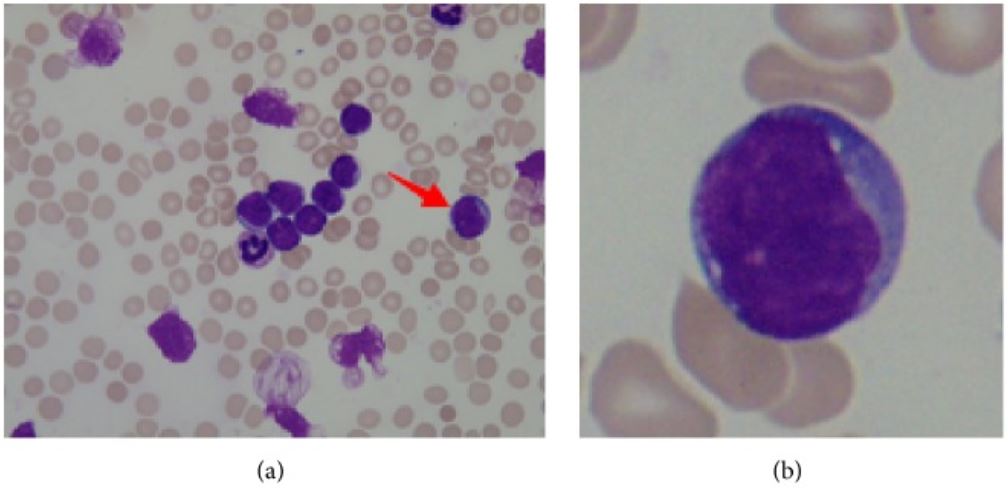Playlist
Show Playlist
Hide Playlist
Leukemia: Acute Lymphocytic Leukemia (ALL) – White Blood Cell Pathology
-
Slides Leukemia White Blood Cell Pathology.pdf
-
Download Lecture Overview
00:03 Let’s take a look at ALL. 00:05 With ALL, acute lymphoblastic leukemia is what I prefer to call it because it’s acute. 00:12 You still expect to find increase in blast count in the bone marrow of greater than 20%. 00:17 Next, it’s lympho. 00:20 Then you have two types, pre-T/pre-B, pre-T/pre-B. 00:25 Can be extramedullary. 00:27 That’s important. 00:28 Call this lymphoblastic lymphoma. 00:30 And where it metastasized is very important, CNS and the testicles, metastasis. 00:37 Acute lymphoblastic leukemia. 00:39 By definition once again, acute, you’re going to find greater than 20% blasts. 00:43 Remember please, this time it will be lymphoblast. 00:46 Smaller than myeloblasts with large nuclei and scant basophilic cytoplasm. 00:51 So cytoplasm is not going to be as abundant as what you find with myeloblast. 00:56 But nonetheless, these are blasts. 01:00 With ALL, quickly for us, we’ll go through tables here to compare and contrast pre-B and pre-T. 01:06 Let’s begin. 01:06 Thank goodness and I say only if your child develops ALL. 01:12 If it’s pre-B, 80% of time, it will be this. 01:16 The reason I said that this is decent is because of prognosis is excellent. 01:20 In pre-T, it’s devastating. 01:24 Let's walk through this just a little bit more. 01:26 Pre-T, where does the T cells gets educated? Thymus, good. 01:31 So now, tons of T -- Let’s say if it was T, type of ALL, Tons of T cells, the thymus is now in a child hyperplasia, hyperplasia, hyperplasia, hyperplasia. 01:44 Oh no. 01:45 Now what happens? In a child, it’s going to compromise the thoracic cavity. 01:49 Compromise perhaps the heart or the lungs. 01:52 Your child is pretty much dead. 01:55 That’s because of death in pre-T. 01:57 Age of onset, childhood. 01:59 Adolescence, a little bit older but still childhood. 02:02 Site: If it’s pre-B, take a look. 02:05 Blood and bone marrow. 02:08 Pre-T, mediastinal mass. 02:10 What does that mean? The thymus. 02:14 Keep that in mind. 02:15 WBC count: Pre-B, low to normal. 02:19 Pre-T, it will be high. 02:22 Prognosis: Pre-B, good. 02:25 Pre-T: Now I want you to connect, mediastinal mass and poor. 02:30 If you find a mediastinal mass in an adolescent or a child and therefore, it will compromise the thoracic cavity and all the organs within it and will kill the patient. 02:40 Poor prognosis. 02:42 Symptoms: Overall, pancytopenia, anemia, thrombocytopenia, leukopenia, neurologic symptoms and bone pain. 02:54 Let’s go into chronic leukemias. 02:56 With chronic leukemia, we’re not going to call these lymphoblastic, myeloblastic. 03:00 No, no, no. 03:01 We will call this chronic myelocytic leukemia and chronic lymphocytic leukemia. 03:08 Same concept as acute but chronic, now, the cells have a little bit more time to mature in the bone marrow. 03:14 You will not find a blast count greater than 20%. 03:18 If anything, you’ll find a blast count to be quite low and a bit less than 10%. 03:23 So more mature leukocyte is the point. 03:26 Chronic mature leukemias. 03:29 We’ll talk about CML, CLL, hairy cell and adult T cell leukemia.
About the Lecture
The lecture Leukemia: Acute Lymphocytic Leukemia (ALL) – White Blood Cell Pathology by Carlo Raj, MD is from the course Leukemia – White Blood Cell Pathology (WBC).
Included Quiz Questions
To which of the following body parts is lymphoblastic lymphoma more likely to metastasize?
- Testicles
- Skeleton
- Intestines
- Liver
- Kidney
Which of the given factors is associated with a good prognosis in acute lymphoblastic leukemia?
- Precursor B acute lymphoblastic leukemia
- Age less than 2 years
- WBC >12,000
- Normal cytogenetics
- Age >11 years
Customer reviews
5,0 of 5 stars
| 5 Stars |
|
5 |
| 4 Stars |
|
0 |
| 3 Stars |
|
0 |
| 2 Stars |
|
0 |
| 1 Star |
|
0 |




